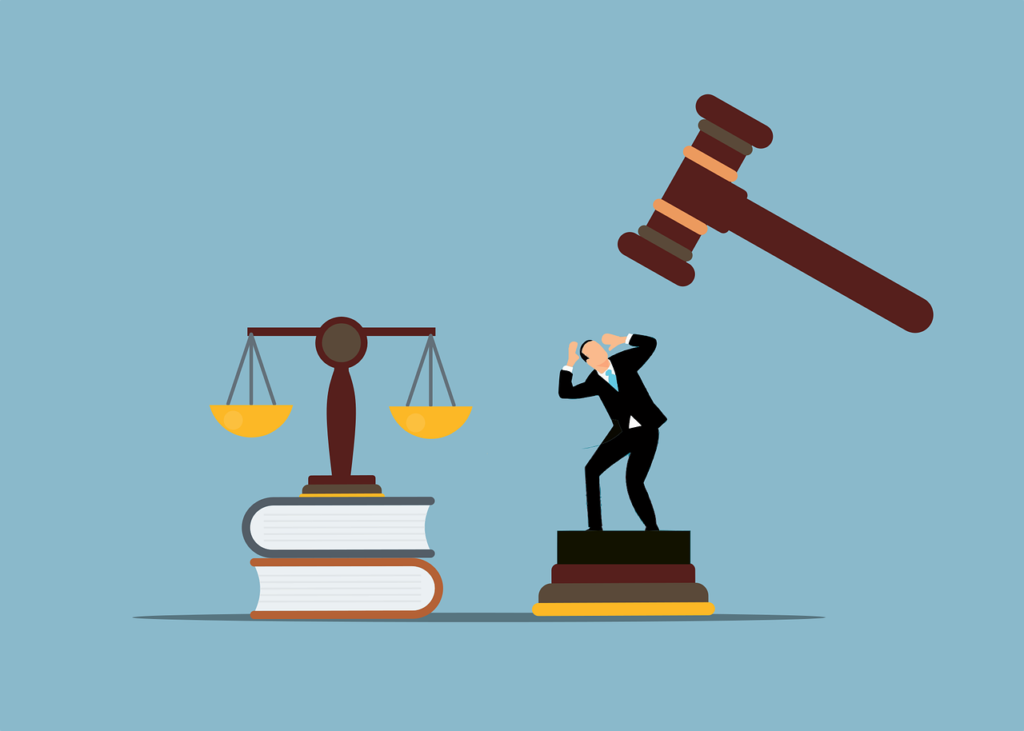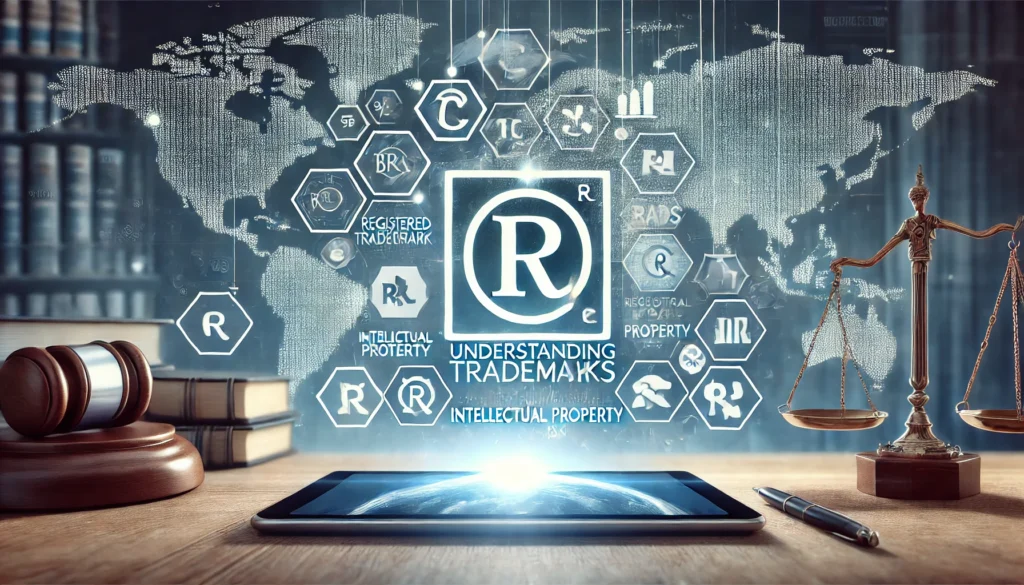Published On: 4th April, 2024
ABSTRACT:
- There is a noticeable rise in the work participation rate among women, however, they still only make up one-third of the total labor force. As their work participation increases, leading to an improvement in their overall status, there is also an increase in labor laws specifically related to women.
- Numerous policies and programs have been put into place to enhance the working conditions for women, with these policies being guided by the provisions of the Indian constitution. The framers of the Constitution gave careful consideration to the role of women in Indian society, as reflected in the constitutional provisions.
- This paper aims to explore the evolution of labor laws concerning women and examine their impact on the rise in work participation rates. Despite the various benefits, concessions, protections, and safeguards provided to working women under different labor laws to ensure security against risks unique to their nature, their work participation remains below expectations. Various reasons for this have been analyzed.
INTRODUCTION :
- Women make up half of society’s population and are often considered the creators of the best things in life. They are the backbone of social structure in any community. In India, women are revered as divine beings embodying all virtues. However, in our society, patriarchy reigns supreme, with men dominating women economically, sexually, and physically.
- Women are often forced to exchange their unpaid domestic labor for their basic needs, turning marriage into a labor contract where husbands control their wives’ work. Throughout history, there has been a lack of practical equality between men and women in any society. But in post-independence India, significant strides have been made towards the liberation of women from all classes and religions.
- Since the dawn of humanity, women have been assigned specific roles. In ancient societies, men engaged in dangerous activities like fighting and hunting, while women managed the home, cooked, and cared for children. As society evolves, more women are stepping out of their homes in search of work, empowered by a growing awareness of women’s status in society.
- We have much preventative legislation in the field of labor and industrial laws that are specifically designed for the benefit of female workers. Furthermore, we have specific provisions in other labor laws for women working in the field. To protect the interests of women workers, the Indian constitution guarantees equal protection to all and includes provisions prohibiting discrimination against women.
- We have committed to providing economic, social, and social justice to all of its community members, as well as equality of status and opportunity. As a result, women have the same status and are treated equally as men. We also have international documents that raise concerns for female workers, especially those in the industrial sector.
Women and the Society :
- Women and their role in society have always been a subject of great importance. Women make up half of the population and are often considered to be the epitome of creation. In any society, it is the woman who plays a crucial role in shaping its social fabric. In India, women are revered as divine beings and are worshipped for their virtuous qualities.
- However, our society is deeply rooted in patriarchy, where men hold dominance over women in various aspects such as economics, sexuality, and physicality. Women, in turn, provide unpaid domestic services in exchange for their upkeep, essentially turning marriage into a labor contract where the husband controls his wife’s labor. Throughout history, there has been a lack of practical equality between men and women in any society, including ancient times. However, in post-independence India, significant efforts have been made to liberate women from all classes and religions.[1]
- Since the evolution of the human race, women have been entrusted with certain types of work. In primitive societies, while men engaged in more dangerous activities like fighting, hunting, and seafaring, women took on the responsibilities of maintaining the home, cooking, and caring for children.[2]
- However, with the rise in social consciousness regarding women’s status, an increasing number of women are leaving the security of their homes and seeking employment. The participation of women in economic activities is not a new phenomenon but rather a continuous development. A historical study of women in India reveals distinct stages of rise and fall in their status within society.[3]
Historical Perspective:
- The historical view of women in ancient times was limited to their role in procreation for men. Women’s lives revolved around being protected by men, whether it be their father, husband, or son. They were confined to the household and were not allowed to seek employment outside of the family, which hindered their economic progress[4]. During the medieval period, women faced numerous social issues such as female infanticide, child marriage, and the sati system. In a male-dominated society, women were treated as objects and were inferior to men.
- They were completely dependent on their husbands, both socially and economically. Women lacked a separate status and were at the mercy of their male counterparts
- However, during the British period, influenced by Western ideas, women began to experience a sense of freedom and a new lease on life. This period coincided with the Renaissance, and social reformers like Raja Ram Mohan Rai and Swami Dayanand Saraswati worked towards awakening Indian women to fight for their rights and place in society. Mahatma Gandhi also advocated for equality and economic independence for women[5].
- This era can be seen as a time of women’s emancipation. With the advent of the Industrial Revolution, women’s roles and work underwent significant changes. They left their homes to work in factories, mills, mines, and plantations, often facing arduous conditions[6].
- The most significant and lasting consequence of industrialization for women was the emergence of the modern role of the housewife as the dominant mature feminine role[7]. The Industrial Revolution reshaped societies worldwide, ushering in a new era of progress and change. With advancements in transportation, communication, science, and technology, not only have new roles emerged, but also new social norms and values[8].
- The shift in perspectives and attitudes towards life has made it essential for families to seek additional sources of income. In today’s world, where production centers are no longer confined to the home, both men and women are required to participate in the workforce to meet socioeconomic demands[9].
- Globalization has further opened up employment opportunities, impacting both men and women alike[10].
- As a result, women have made significant strides in the workforce, although their participation rate still lags behind that of men. Nevertheless, the trend is moving towards greater gender equality in employment.
Constitutional Provisions :
Empowering Women for a Brighter Future
- Our constitution lays down the foundation for a society where every individual is treated equally and provided with opportunities to succeed.
- The fundamental rights enshrined in the Constitution of India ensure that every citizen, regardless of gender is entitled to equality, freedom, and protection against exploitation. These rights are not just words on paper – they are a guarantee of a fair and just society.
- Women, in particular, benefit from these constitutional provisions. The Directive Principles of State Policy further emphasize the importance of addressing women’s issues and providing them with special protection. Through articles like 38, 39 (a) (d), 42, 44, and 45, women are given the support they need to thrive and succeed in all aspects of life[11].
- By upholding these constitutional rights and principles, we are not only ensuring equality for women but also paving the way for a more inclusive and progressive society. It is through these provisions that we can create a society where every individual has the opportunity to reach their full potential and contribute to the nation’s growth and development.
Equal pay for the same job:
- Article 39 of the Indian constitution guides all states to ensure equal pay for the same job for both men and women. This has been developed to help women workers who are placed in similar roles and perform functions similarly but are handled unequally in the salary scale. The government passed the “Equal Pay Act of 1976,” which allows men and women to be paid equally, attempting to help gender job demarcation.
- The [12]State of Punjab and Ors. v. Jagjit Singh and Ors case has resulted in a judgment by the Supreme Court. The court held that it is unacceptable for an employee who performs the same duties and responsibilities as another to be paid less. This is especially true in a welfare state.
- Such an action not only diminishes the individual but also undermines the very essence of human dignity. When someone is forced to work for a lower wage, they do so out of necessity to provide for their family. However, this comes at the expense of their self-respect, dignity, self-worth, and integrity.
- Paying lower wages to individuals in similar circumstances is an exploitative form of enslavement that stems from a position of dominance. It is undoubtedly oppressive, suppressive, and coercive, as it forces involuntary subjugation.
- The Supreme Court also noted that India, as a signatory to the International Covenant on Economic, Social and Cultural Rights, 1966, cannot escape its obligations under this agreement. The different provisions of the Constitution further reinforce the principle of equal pay for equal work. Therefore, every employee, whether permanent or temporary, has the unambiguous right to receive equal pay for equal work.
- It is important to note that equal pay for equal work is not explicitly stated as a constitutional or fundamental right. However, it can be inferred through the interpretations of Articles 14, 15, and 16, which guarantee fundamental rights of equality before the law, protection against discrimination, and equal opportunities in public employment. The Universal Declaration of Human Rights also emphasizes the right to equal pay without any form of discrimination.
The Equal Pay Act of 1976:
- The Equal Pay Act of 1976 provides that “the provisions thereof will have influence prejudice to the generality conflicting bound to remain enclosed in any other law or the aspects of every initiative, contract, or agreement of facilities, regardless of whether created before or following the beginning of this Act or in any other object major movements even under the statute at the time to be in force[13].”
Maternity Benefit Act,1961:
- To satisfy the legal requirement as stated in Article 42 that talks here about the nation is to start making regulations to guarantee more just civilized working conditions and maternity benefits. The Maternity Benefit Act of 1961 became law. The act’s goal is to control women’s participation in certain organizations only at certain periods before and following birth, as well as to offer maternity benefits and other advantages. The act, which was modified numerous times, relates to every organization that is a factory, mine, or plantation, along with any such organization that is government-owned, as well as any organization where employees are paid to execute equestrian, athletic, or other activities.
- Moreover, the Act is applicable toward any store or institution well within the significance of any law as it stands in power about stores and institutions in a nation where ten or even more individuals are or were hired every day in the preceding twelve months. The government has the authority to implement the legislation in any other institution, manufacturing, advertisement, agrarian, or other, with at least two weeks to a month’s notification and the authorization of the central government[14].
Labor Legislation:
- It has been put in place to protect the rights and well-being of women workers. These laws recognize the unique characteristics of women, both physically and mentally, and aim to ensure their equal treatment and opportunities in the workplace.
- During the British period and after independence, several Acts related to employment were enacted to regulate working hours and address the health, safety, and welfare of women workers. These Acts were influenced by the Conventions and recommendations of the International Labor Organization (ILO), which played a significant role in shaping labor laws worldwide.
- The primary objectives of these laws are to promote gender equality, enhance women’s overall quality of life, and increase their participation in meaningful and productive work. They also emphasize the importance of providing adequate healthcare and support for women during pregnancy and after childbirth. Additionally, these legislations advocate for equal pay for equal work, ensuring that women receive fair compensation for their contributions[15].
- In addition to implementing ILO conventions, the Government of India has incorporated various provisions into labor legislation to safeguard the rights of women workers. These measures aim to create a safe and inclusive work environment, free from discrimination and exploitation.
- Overall, these labor legislations play a crucial role in empowering women in the workforce and promoting gender equality. They serve as a framework for ensuring that women have equal opportunities, protection, and support in their professional lives.
The Factories Act 1948:
- Numerous sections of the Factory Act of 1948 directly mention welfare schemes for female workers. This same hereunder are the important and relevant provisions:
- Section 19(1) of the Law stipulates that in every factory-
- Adequate latrines and urinal installations of the recommended kinds must be ideally placed and available to employees at all points of time whenever they are at work.
- Male and female workers must have separate enclosed quarters.
- Such accommodations must be adequately lit and ventilated, and no latrine or urinal may communicate with any workroom unless specifically exempted in writing by the chief inspector.
- All those arrangements must be kept neat and clean at all times.
- Cleaners will be hired for whom the main responsibility will be to keep latrines, urinals, and cleaning stations hygienic[16].
Employment on or around moving machinery:
- No woman or young person shall be allowed to clean, lubricate, or adjust any component of the prime mover or transmission equipment, or to clean, lubricate, or adjust any portion of any machine if such cleaning is prohibited. lubrication or adjustment would subject the woman or young person to the risk of injury from any moving part of either that machine or of any other[17].
The Employee’s State Insurance Act, 1948:
- The Employee’s State Insurance Act of 1948’s section 50, which addresses maternity benefits, states that “the insured lady shall qualify for maternity benefit and shall be subject to such conditions as may be imposed by the central government concerning the circumstances under which such benefit may be provided, the rates and length thereof.”[18]
The Employee’s Date Insurance (General) Regulations 1950:
- In rules 87 through 94, maternity benefits are outlined and are available to insured women. The laws are as follows[19]:
- According to Notice of Pregnancy Regulation – 87, an insured woman who decides to provide notice of pregnancy before delivery must submit a Form 19 notification to the relevant local office by mail or other means, together with a Form 20 certificate of pregnancy that was issued in compliance with this regulation no earlier than seven days before the day on which the notices are delivered.
- Every insured woman requesting maternity benefits before giving birth must send a letter or other form of submission to the relevant local official by Regulation 88.
- A Form 21 Certificate of Expected Confinement, issued in conformity with this rule, no sooner than 15 days before the anticipated date of confinement.
- A form 22 claim for maternity benefits detailing the date the claimant stopped or will stop working for pay.
- A certificate of confinement in form 23 issued in conformity with these rules within 30 days of the day her imprisonment begins.
The Mines Act of 1952:
- ‘The Employment of Women’ is addressed in Section 46 of the Mines Act of 1952, which states the following:
- Notwithstanding any other laws to the contrary, no woman shall work
- Any area of a mine that is underground,
- Except during the hours of 6 AM and 7 PM, in any mine that is above ground.
- Any woman working above the ground in a mine is entitled to a break of at least 11 hours between the end of her shift and the start of the following shift.
- Despite what is stated in sub-section (1), the central government may change the hours that women are allowed to work above ground in any mine or class or description of mine by publishing a notice in the official Gazette. However, this does not permit the employment of any women between the hours of 10 PM and 5 AM[20].
Conclusion:
Consequently, it is evident that the aforementioned labor regulation categorically separated women from other employees and included unique measures for this group of individuals with a focus on their welfare and the necessary protection. The workers’ overall health, particularly that of the women workers, cannot be ignored at the same time. According to Article 11(1)(F) of the convention on the elimination of all forms of discrimination against women, “state parties shall take all appropriate measures to eliminate discrimination against women in the enjoyment of their right to the protection of their health and to safety in the workplace, including the preservation of the function of reproduction. Hence, to achieve good economic growth, emerging countries are urged to make investments in health and focus their policies on this area. In this way, our nation’s labor laws, which are intended to promote worker welfare, should also include provisions for upholding and protecting employees’ health, since the government must give priority to protecting the health of all people, especially women, children, and vulnerable groups.
Reference(s):
[1] Preety Jain, “Domestic Violence Act, 2005: A shied for women”, (M.D.U. Law Journal, Vol-XI, Part II, 2006, P-44-45)
[2] Rajendra K. Sharma, “Indian Society Institutions and Change”(,2004, P-289)
[3] Manju Jamwal, “Sexual Harassment of Women at Work Place; Need For a comprehensive Legislation” XVKULR 2008. P-101-105)
[4] Mohd Wasim Ali, “Crime Against Women: An Appraisal of Increasing Trend in India”, (1999 Cr CJ. 17)
[5] Anjani Kant, “Women and the Law”, (2008 P-68-69)
[6] G.Q. Mir, “Women Workers And The Law”, (2002 P-2-3)
[7] Michael Haralambos and Robin Herald, “Sociology Themes and Perspectives”, (2002, P-379)
[8] Anil Dutt Misra, “Problems and Prospects of Working Women in Urban India, (1994 P-104)
[9] Preetam Kandewal, “Empowerment in the organic sector in the 1990s: An Analysis from Gender Perspective” Indian Journal of Industrial Relations, (Vol 40, No 1, July 2004, P 24.)
[10] Mohamed Usmon, “Liberalisation, Privatisation, And Globalisation v/s Women Workers in Unorganized Sector, with Human Rights Perspective” (M.D.U Law Journal vol-XI, Part II, 2006, P-171)
[11] S.C Tripathi and Vibha Arora, “Law relating to women and children, 2008, (Central Law publication, P-14-15. Also, see Mamta Rao, “Law related to Women and Children” Eastern Book Co.Lucknow, 2005. pp.363-86)
[12] ‘Equal Pay for Equal Work’ <https://legalserviceindia.com/legal/article-2767-equal-pay-for-equal-work.html> accessed 22 February 2024
[13] ‘<https://labour.gov.in/sites/default/files/equal_remuneration_act_1976_0.> accessed 22 February 2024
[14] ‘Maternity Benefit Act, 1961’ <http://indiacode.nic.in/handle/123456789/1681> accessed 22 February 2024
[15] Memoria, and Memoria, “Industrial Labor, Social Security, and Industrial Peace in India” (Allahabad, Kitab Mahal, Allahabad,1984, P-136)
[16] ‘The Factories Act, 1948 Ministry of Labor & Employment |Government of India’ <https://labour.gov.in/acts/factories-act-1948> accessed 22 February 2024
[17] ‘Section 22 in The Factories Act, 1948’ <https://indiankanoon.org/doc/1553727/> accessed 22 February 2024
[18] ‘Employees State Insurance Act, 1948’ <http://indiacode.nic.in/handle/123456789/1441> accessed 22 February 2024
[19] ‘The Employees’ State Insurance (General) Regulations, 1950’ <https://indiankanoon.org/doc/52732898/> accessed 22 February 2024
[20] ‘Section 46: Employment of Women | The Mines Act, 1952’ <https://kanoongpt.in/bare-acts/the-mines-act-1952/section-46> accessed 22 February 2024




